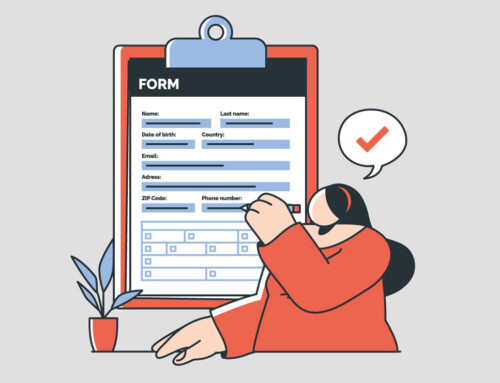Contents
In today’s fast-paced legal industry, automation is becoming increasingly crucial. With the growing demands on legal professionals, the need for efficient and accurate document management is more pressing than ever. Enter AI-powered legal document automation, revolutionizing the way law firms handle their documentation processes.
Understanding Legal Document Automation with AI
Definition and Key Concepts
Legal document automation with AI involves using artificial intelligence technologies to create, manage, and optimize legal documents. Unlike traditional document automation, which relies on pre-set templates and manual data entry, AI-powered solutions leverage machine learning and natural language processing to understand and generate complex legal language. This allows for dynamic document creation, where AI can pull relevant information from various sources, ensuring that the final document is accurate, comprehensive, and tailored to specific legal requirements.
How AI Enhances Traditional Document Automation
AI enhances traditional document automation in several significant ways:
- Intelligent Data Extraction: AI algorithms can quickly and accurately extract data from existing documents, emails, and other sources, reducing the need for manual entry.
- Contextual Understanding: By understanding the context and nuances of legal language, AI can ensure that documents are not only accurate but also contextually appropriate.
- Adaptive Learning: AI systems learn from each interaction, continuously improving their accuracy and efficiency over time.
- Customization and Flexibility: AI allows for greater customization, enabling law firms to create documents that meet specific client needs and comply with varying legal standards.
Key Takeaways:
- Definition: Legal document automation with AI uses artificial intelligence to streamline and enhance the document creation process.
- Enhanced Capabilities: AI improves traditional automation through intelligent data extraction, contextual understanding, adaptive learning, and greater customization.
- Efficiency and Accuracy: These enhancements lead to more efficient and accurate document management, benefiting law firms significantly.
Benefits of Legal Document Automation with AI
Increased Efficiency and Productivity
Legal document automation with AI significantly boosts efficiency and productivity within law firms. By automating the repetitive and time-consuming tasks associated with document creation and management, lawyers and support staff can focus on more strategic and high-value activities. For instance, AI can automatically generate documents from templates, populate them with relevant data, and even review them for errors, saving countless hours that would otherwise be spent on manual work. This increase in productivity allows firms to handle a higher volume of cases and clients without a corresponding increase in workload.
Enhanced Accuracy and Reduced Errors
Accuracy is paramount in legal documentation, where even minor errors can have significant consequences. AI-powered document automation ensures that documents are consistently accurate by reducing human error. AI systems can cross-check information, validate data, and ensure that all legal requirements and standards are met. They can also flag inconsistencies and potential issues for human review, providing an additional layer of quality control. This enhanced accuracy not only improves the quality of legal work but also helps build trust with clients and reduces the risk of costly mistakes.
Cost Savings and Resource Optimization
One of the most compelling benefits of legal document automation with AI is the potential for substantial cost savings. By automating routine tasks, law firms can reduce labor costs and optimize the use of their resources. This technology allows firms to do more with less, freeing up human resources for tasks that require critical thinking and personal interaction. Additionally, AI-driven automation reduces the need for extensive physical storage, as documents can be efficiently managed and stored digitally. These cost savings can be reinvested into the firm to drive growth and innovation.
How RunSensible’s AI Features Contribute to These Benefits
RunSensible’s AI-powered solutions exemplify the benefits of legal document automation. Here’s how:
- Efficiency: RunSensible’s automation tools streamline document workflows, allowing for quick generation and processing of legal documents. This enables law firms to handle more cases in less time.
- Accuracy: The AI in RunSensible’s software cross-references data and ensures that every document meets legal standards, reducing the risk of errors.
- Cost Savings: By automating routine tasks, RunSensible helps firms cut down on labor costs and optimize their use of resources. Additionally, its digital document management system reduces the need for physical storage space.
- Integration and Usability: RunSensible offers easy integration with existing systems, ensuring that firms can adopt AI automation without disrupting their current workflows. Its user-friendly interface makes it accessible to all staff members, enhancing overall productivity.
By leveraging these AI features, RunSensible enables law firms to achieve greater efficiency, accuracy, and cost-effectiveness in their document management processes.
Implementing AI-Powered Document Automation in Your Law Firm
Steps to Get Started with Legal Document Automation
Implementing AI-powered document automation in your law firm involves several crucial steps:
- Identify Needs and Objectives: Start by identifying which processes and types of documents will benefit most from automation. Determine your primary objectives, such as improving efficiency, reducing errors, or cutting costs.
- Conduct a Workflow Analysis: Analyze your current document workflows to understand where inefficiencies and bottlenecks occur. This will help you target areas where AI can have the greatest impact.
- Develop a Plan: Create a detailed implementation plan that includes timelines, resources needed, and key milestones. This plan should address both the technical and operational aspects of integration.
Choosing the Right AI Tools and Software
Selecting the right AI tools and software is critical for successful implementation:
- Assess Compatibility: Ensure that the AI solutions you choose are compatible with your existing systems and workflows. Look for software that offers seamless integration with your current technology stack.
- Evaluate Features: Consider the features offered by different AI tools. Look for functionalities like intelligent data extraction, contextual understanding, and customization options that align with your firm’s needs.
- Check Vendor Support: Choose vendors that provide robust support and training to help your firm adapt to the new technology. Vendor support can make a significant difference in the smoothness of the transition.
Integrating AI Automation with Existing Systems
Integration is a crucial phase in implementing AI-powered document automation:
- Data Migration: Carefully plan the migration of existing data into the new system. Ensure that all data is accurately transferred and properly formatted.
- System Configuration: Configure the AI tools to match your specific workflows and document management processes. Customization is key to maximizing the benefits of automation.
- Pilot Testing: Conduct pilot tests to identify any issues or adjustments needed before a full-scale rollout. Use feedback from these tests to refine the system.
How RunSensible Simplifies Implementation
RunSensible offers a streamlined implementation process that simplifies the adoption of AI-powered document automation:
- User-Friendly Interface: RunSensible’s intuitive interface makes it easy for all staff members to use the software effectively, reducing the learning curve.
- Seamless Integration: RunSensible is designed to integrate seamlessly with your existing systems, minimizing disruptions to your current workflows.
- Comprehensive Support: RunSensible provides extensive support and training to ensure that your firm can fully leverage the benefits of AI-powered document automation.
Tip
Start Small: When implementing AI-powered document automation, start with a small pilot project. Choose a specific type of document or a single workflow to automate first. This allows your team to adapt to the new technology gradually and provides valuable insights that can be applied to broader implementation.
Best Practices for Legal Document Automation
Ensuring Data Security and Confidentiality
Data security and confidentiality are paramount in legal document management. Here are best practices to ensure your data remains secure:
- Implement Robust Security Measures: Use advanced encryption methods for data storage and transmission. Ensure that your AI tools comply with industry-standard security protocols.
- Access Controls: Set up stringent access controls to restrict who can view and edit sensitive documents. Role-based access ensures that only authorized personnel can access critical information.
- Regular Audits: Conduct regular security audits to identify vulnerabilities and ensure compliance with legal and regulatory standards. Regular updates and patches should be applied to maintain security integrity.
Regularly Updating and Training Staff on AI Tools
Continuous training and updates are essential to maximize the benefits of AI-powered document automation:
- Ongoing Training Programs: Implement continuous training programs to keep staff updated on the latest features and best practices of the AI tools. This can include workshops, webinars, and online courses.
- User Manuals and Resources: Provide comprehensive user manuals and resources that staff can refer to when they need help or clarification.
- Feedback Mechanisms: Establish feedback mechanisms to gather input from staff about the AI tools. Use this feedback to make improvements and tailor training programs.
Customizing AI Solutions to Meet Specific Needs
Customization ensures that AI-powered document automation tools meet the unique needs of your law firm:
- Tailor Workflows: Customize the AI tools to align with your firm’s specific workflows and document management processes. This ensures that the automation solutions are effective and relevant.
- Document Templates: Develop customized document templates that cater to the specific types of documents your firm handles. This enhances efficiency and consistency.
- Adaptive Learning: Leverage the adaptive learning capabilities of AI to continuously refine and improve document automation processes based on real-world use and feedback.
How RunSensible Supports Ongoing Optimization
RunSensible is committed to helping law firms continuously optimize their AI-powered document automation processes:
- Regular Updates: RunSensible provides regular updates to its AI tools, ensuring that your firm always has access to the latest features and improvements.
- Customer Support: Dedicated customer support teams are available to assist with any issues and provide guidance on best practices.
- Customization Services: RunSensible offers customization services to tailor its AI solutions to the specific needs of your firm, ensuring maximum effectiveness and efficiency.
Tip
Stay Proactive: Continuously monitor and evaluate the performance of your AI-powered document automation tools. Regularly review workflows, gather user feedback, and stay informed about new features and updates. This proactive approach ensures that your firm consistently benefits from the latest advancements in AI technology.
Common Challenges and Solutions
Overcoming Resistance to Technology Adoption
Adopting new technology often meets resistance from staff who are comfortable with existing processes. To overcome this challenge:
- Change Management: Implement a structured change management strategy that includes clear communication about the benefits of AI-powered document automation and how it will improve their daily work.
- Inclusive Involvement: Involve staff early in the decision-making process to make them feel invested in the transition. Their input can provide valuable insights and help smooth the adoption process.
- Training and Support: Provide comprehensive training sessions and ongoing support to help staff become proficient with the new technology. Highlight success stories within the firm to show tangible benefits.
Addressing Data Privacy Concerns
Data privacy is a critical concern when implementing AI solutions. To address these concerns:
- Strict Compliance: Ensure that your AI tools comply with all relevant data privacy laws and regulations, such as GDPR or CCPA. This includes proper data handling, storage, and sharing practices.
- Data Anonymization: Use data anonymization techniques to protect sensitive information. This process involves removing or encoding personally identifiable information.
- Transparency: Maintain transparency with clients and staff about how data is collected, used, and protected. Clear privacy policies and regular updates can help build trust and confidence.
Ensuring Seamless Integration with Existing Workflows
Integrating AI-powered document automation with existing workflows can be challenging. To ensure a seamless integration:
- Compatibility Checks: Perform thorough compatibility checks to ensure that the new AI tools can integrate smoothly with your current systems. This includes software, databases, and hardware.
- Phased Implementation: Adopt a phased approach to integration. Start with a small-scale pilot project to test the integration and address any issues before a full-scale rollout.
- Ongoing Support: Provide ongoing technical support to address any integration issues quickly. Regularly review and adjust the integration process based on feedback and performance.
How RunSensible Helps Mitigate These Challenges
RunSensible offers robust solutions to mitigate common challenges in implementing AI-powered document automation:
- Comprehensive Onboarding: RunSensible provides a detailed onboarding process that includes training, support, and resources to help staff adapt to new AI tools.
- Privacy and Security: RunSensible’s AI solutions are designed with strict privacy and security measures to ensure compliance with data protection laws and build client trust.
- Smooth Integration: RunSensible’s software is engineered for seamless integration with existing systems, reducing the risk of disruptions and ensuring a smooth transition.
Important
Monitor and Adapt: Regularly monitor the performance of your AI-powered document automation systems and be prepared to adapt as needed. Technology evolves rapidly, and staying current with updates and improvements is crucial to maintaining efficiency, accuracy, and security. Engage with your technology provider to ensure you are leveraging the latest advancements and best practices in AI.
Case Studies: Successful AI Document Automation in Law Firms
Examples from Forward-Thinking Law Firms
- V500 Systems: Enhancing Document Analysis
- Challenge: V500 Systems faced inefficiencies in legal document analysis, which was time-consuming and prone to errors.
- Solution: Implementing AI allowed the firm to process and analyze large volumes of documents rapidly, significantly reducing the time spent on manual analysis.
- Results: The firm achieved efficiency gains of up to 70%, improving both speed and accuracy in document handling (The Art of Law and Technology).
- PNC Bank: Streamlining Legal Bill Review
- Challenge: PNC Bank struggled with the manual review of legal bills, leading to high labor costs and potential errors.
- Solution: The bank adopted AI for legal bill review, which automated the process and ensured greater accuracy.
- Results: PNC Bank reported a significant reduction in review times and costs, along with improved accuracy, strengthening their relationships with external law firms (The Art of Law and Technology).
- Lavan: Transitioning to Cloud-Based Document Management
- Challenge: Australian law firm Lavan needed to enhance productivity and security by moving away from an on-premises system.
- Solution: The firm transitioned to a cloud-based document management system with NetDocuments, enabling more efficient and secure document handling.
- Results: Lavan increased efficiency, reduced storage costs, and allowed lawyers to focus more on high-value client work (NetDocs).
- Maurice Turnor Gardner: Adapting to Remote Work
- Challenge: The London-based firm had to quickly adapt to remote working due to the pandemic, which stressed their existing document management system.
- Solution: By adopting a cloud-based document management system, the firm improved flexibility, productivity, and security.
- Results: The transition enabled seamless remote access to documents and improved overall document management efficiency (NetDocs).
Lessons Learned and Key Takeaways
From these case studies, several key takeaways emerge for law firms considering AI-powered document automation:
- Efficiency Gains: AI automation significantly reduces the time required for document creation, review, and management, leading to enhanced operational efficiency.
- Error Reduction: Automating repetitive tasks minimizes human errors, ensuring higher accuracy and compliance with legal standards.
- Cost Savings: The automation of routine tasks leads to substantial cost savings by reducing labor costs and optimizing resource allocation.
- Scalability: AI-powered solutions enable law firms to scale their operations efficiently, handling larger volumes of work without a proportional increase in resources.
- Focus on High-Value Tasks: By automating mundane tasks, lawyers can focus on more strategic and high-value activities, improving the overall quality of legal services.
Future Trends in Legal Document Automation with AI
Emerging Technologies and Innovations
The landscape of legal document automation with AI is continuously evolving, driven by emerging technologies and innovative applications. Here are some key trends to watch:
- Natural Language Processing (NLP) Advancements
- NLP technology is becoming increasingly sophisticated, enabling AI to understand and generate complex legal language more accurately. This advancement allows for more nuanced document drafting and review, reducing the need for human intervention and increasing efficiency.
- AI-Driven Predictive Analytics
- Predictive analytics uses AI to analyze historical data and predict future outcomes. In legal contexts, this can help anticipate case outcomes, optimize litigation strategies, and identify potential risks. By leveraging predictive models, law firms can make more informed decisions and improve their case management processes (The Art of Law and Technology) (LexWorkplace).
- Integration of Blockchain Technology
- Blockchain offers secure, transparent, and immutable records, which can be highly beneficial for legal document management. Integrating AI with blockchain can enhance the security and traceability of legal documents, ensuring compliance and reducing the risk of fraud.
- AI-Powered Legal Research Tools
- AI tools are revolutionizing legal research by quickly sifting through vast amounts of legal texts to find relevant information. These tools can provide more accurate and faster results than traditional methods, significantly reducing the time lawyers spend on research (UiPath).
- Robotic Process Automation (RPA)
- RPA combined with AI can automate repetitive administrative tasks, such as document filing, data entry, and compliance checks. This combination allows law firms to streamline their operations and improve efficiency by reducing the manual workload on their staff (NetDocs).
The Role of AI in Shaping the Future of Legal Practice
AI is not just a tool for improving efficiency; it is poised to fundamentally transform the legal profession. Here are some ways AI is shaping the future of legal practice:
- Enhanced Client Services
- AI enables law firms to offer more personalized and efficient services to clients. For example, AI-driven chatbots can handle initial client inquiries, schedule appointments, and provide updates on case progress, enhancing client satisfaction and engagement.
- Data-Driven Decision Making
- Improved Access to Justice
- AI-powered tools can make legal services more accessible by reducing costs and providing affordable legal assistance. For instance, AI can assist with document preparation for pro se litigants, making it easier for individuals to navigate the legal system without expensive legal representation.
- Continuous Learning and Adaptation
- AI systems learn and improve over time, becoming more accurate and efficient with each interaction. This continuous learning capability ensures that AI tools stay up-to-date with the latest legal developments and can adapt to changing legal landscapes.
- Ethical and Regulatory Considerations
- As AI becomes more integrated into legal practice, it is essential to address ethical and regulatory considerations. Law firms must ensure that their AI tools comply with legal standards and do not compromise client confidentiality or data security (LexWorkplace).
Embrace the Future: AI-Driven Legal Document Automation
Legal document automation with AI is revolutionizing modern law practices by significantly boosting efficiency, accuracy, and cost savings. Integrating AI into legal workflows allows firms to automate repetitive tasks, reduce human errors, and focus on high-value activities. Case studies from firms like V500 Systems, PNC Bank, and Lavan demonstrate the transformative impact of AI, showing remarkable improvements in productivity and operational efficiency. These successes underscore the importance of investing in AI technology to streamline document management processes and enhance service quality.
As the legal industry evolves, keeping pace with emerging technologies is crucial. Future advancements in natural language processing, predictive analytics, blockchain integration, and robotic process automation promise to further revolutionize legal document management. By proactively adopting these innovations, law firms can maintain a competitive edge and provide superior client services.
Ready to elevate your practice? Contact RunSensible for a demo and discover how our advanced AI features can transform your document management processes, leading to a more efficient and innovative legal practice.
FAQs
1. How does AI improve the accuracy of legal document automation?
AI enhances the accuracy of legal document automation by utilizing advanced algorithms for data extraction, analysis, and validation. Machine learning and natural language processing (NLP) allow AI systems to understand and generate complex legal language, ensuring that documents are both precise and compliant with legal standards. These technologies can cross-check information, flag inconsistencies, and reduce human errors, providing an additional layer of quality control and improving overall document reliability.
2. What are the cost benefits of implementing AI-powered document automation in a law firm?
Implementing AI-powered document automation can lead to substantial cost savings for law firms. By automating routine and time-consuming tasks such as document creation, review, and data entry, firms can significantly reduce labor costs. AI systems also minimize errors, which can prevent costly legal mistakes and rework. Additionally, AI-driven automation can streamline operations, enabling firms to handle a larger volume of work without a proportional increase in resources, thus optimizing overall resource allocation and operational efficiency.
3. What are the key considerations for integrating AI-powered document automation with existing legal systems?
When integrating AI-powered document automation with existing legal systems, key considerations include compatibility, data migration, and security. It’s crucial to ensure that the AI tools are compatible with your current technology stack to enable seamless integration. Proper planning for data migration is essential to ensure all existing data is accurately transferred and properly formatted. Security is another critical aspect, as AI systems must comply with data privacy regulations and protect sensitive legal information. Choosing a vendor that offers robust support and customization options can also facilitate a smooth and successful implementation process
Disclaimer: The content provided on this blog is for informational purposes only and does not constitute legal, financial, or professional advice.









